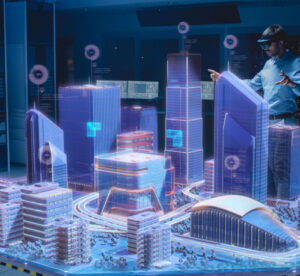
January 31, 2022
When engineers design facilities – whether they’re factories, wastewater treatment sites, fabrication plants, or any other high-functioning facility – they need to know the build matches the design. Making sure this is the case can be tricky, but modern digital engineering and 3D modeling make the process a lot easier.
Still, many are trepidatious when it comes to implementing a BIM (building information modeling) based solution. Fortunately, much of this hesitance is based on a few myths about digital engineering. Here, we’ll dispel the top three digital engineering myths to remove any doubt about its value throughout the lifecycle of a facility.

One common misconception about digital engineering is that capturing a 3D point cloud model will generate a ton of data that can’t be easily managed or connected to other information about a facility. Building information models (BIMs) can be obtained from scan-to-BIM methodology, which then needs to be turned into a digital twin for it to have any value in the build process.
Facilities have a multitude of data to keep track of – drawings, point clouds, as-designed, and as-is documentation, CAD models, facilities change logs, operational data, inspection and maintenance records, business and operational KPIs – the list goes on and on. Without the right solution for managing all this data, life can be difficult for engineers and facilities managers alike.
Fortunately, this kind of data nightmare is no longer a concern. Nowadays, software like JP Interactive Viewer exists to bring together all pertinent build and facility information in one place, accessible to anyone with the proper access authority.
Because digital engineering is cutting edge, many assume it’s not for them because it must be more costly than traditional methods. As it turns out, a properly managed project that uses modern digital engineering to keep it streamlined and efficient is more cost-effective and efficient than the old-school build process.
Consider this contrast: In a cost comparison1 for a Manhattan skyscraper project, the cost to do a traditional manual field verification of three floors came to nearly $3000. By contrast, the cost to do the same job with a 3D scan came to $750.
Not to mention, 3D scans are free from human error and take a fraction of the time. The aforementioned job’s time scale? Three full workdays and two skilled laborers for the manual verification versus four hours of one tech’s time for the 3D scan.
This kind of cost and efficiency improvement continues over the lifecycle of the build, from initial design to verification to updates to changes to ongoing maintenance, especially if there’s a cloud-based software package capable of centralizing all the data.
Indeed, 3D modeling yields a highly complex set of data that can be used to create detailed BIMs and a digital twin with down-to-the-screw accuracy. It’s easy to see, then, how it might seem to some that the process of setting up 3D models is complex.
The truth is, it’s not. One technician can easily set up a LiDAR 3D laser scanning solution and for all intents and purposes stand back and let the machine do the work of scanning and creating a point cloud. For outdoor or large facility area scans, modern UAVs (unmanned aerial vehicles – or drones), can do in minutes what used to take surveyors days to accomplish.
Once point cloud data is captured, it’s easy to transfer to the cloud and software can generate digital twins to represent facilities with pinpoint accuracy.
Traditional facility construction was complicated, costly, and error prone. Problems like duplicate data, miscommunication, or inaccurate manually drawn models can make an old-school approach unwieldy. Digital engineering techniques and technology exist for that very reason – to make things easier.
When things are easy, they cost less – in human hours, mistake correction, and ongoing management time. But, like many new methodologies, digital engineering may sound like the kind of high-end solution only the very rich or talented can afford. In fact, the truth is quite the opposite. Digital engineering makes high-quality, highly efficient processes available to anyone putting together any kind of facility – big or small, complex or simple.
If you’re used to the old way of managing facilities construction, digital engineering can seem daunting at first. But the reality is the tools available for taking a project from “barely got it done under budget and on time” to “well under budget and way ahead of schedule” are readily available, affordable, and easy to implement.
Still not sure about digital engineering? Try out JP Interactive Viewer for free or contact us today to learn more.
Sources:
1. https://caddjm.com/correcting-3-common-misconceptions-of-3d-scanning/